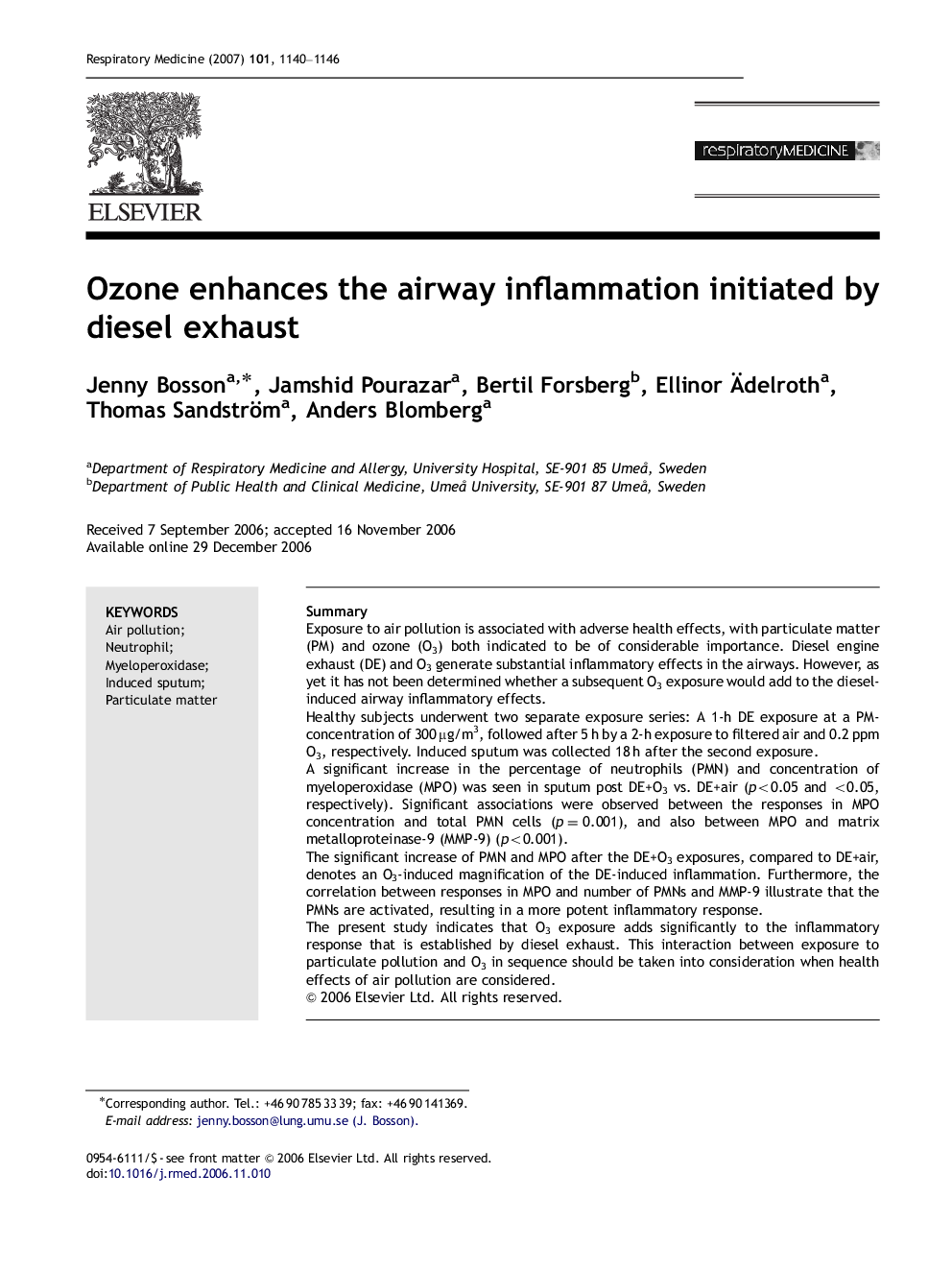| Article ID | Journal | Published Year | Pages | File Type |
|---|---|---|---|---|
| 4211653 | Respiratory Medicine | 2007 | 7 Pages |
SummaryExposure to air pollution is associated with adverse health effects, with particulate matter (PM) and ozone (O3) both indicated to be of considerable importance. Diesel engine exhaust (DE) and O3 generate substantial inflammatory effects in the airways. However, as yet it has not been determined whether a subsequent O3 exposure would add to the diesel-induced airway inflammatory effects.Healthy subjects underwent two separate exposure series: A 1-h DE exposure at a PM-concentration of 300 μg/m3, followed after 5 h by a 2-h exposure to filtered air and 0.2 ppm O3, respectively. Induced sputum was collected 18 h after the second exposure.A significant increase in the percentage of neutrophils (PMN) and concentration of myeloperoxidase (MPO) was seen in sputum post DE+O3 vs. DE+air (p<0.05 and <0.05, respectively). Significant associations were observed between the responses in MPO concentration and total PMN cells (p=0.001), and also between MPO and matrix metalloproteinase-9 (MMP-9) (p<0.001).The significant increase of PMN and MPO after the DE+O3 exposures, compared to DE+air, denotes an O3-induced magnification of the DE-induced inflammation. Furthermore, the correlation between responses in MPO and number of PMNs and MMP-9 illustrate that the PMNs are activated, resulting in a more potent inflammatory response.The present study indicates that O3 exposure adds significantly to the inflammatory response that is established by diesel exhaust. This interaction between exposure to particulate pollution and O3 in sequence should be taken into consideration when health effects of air pollution are considered.
